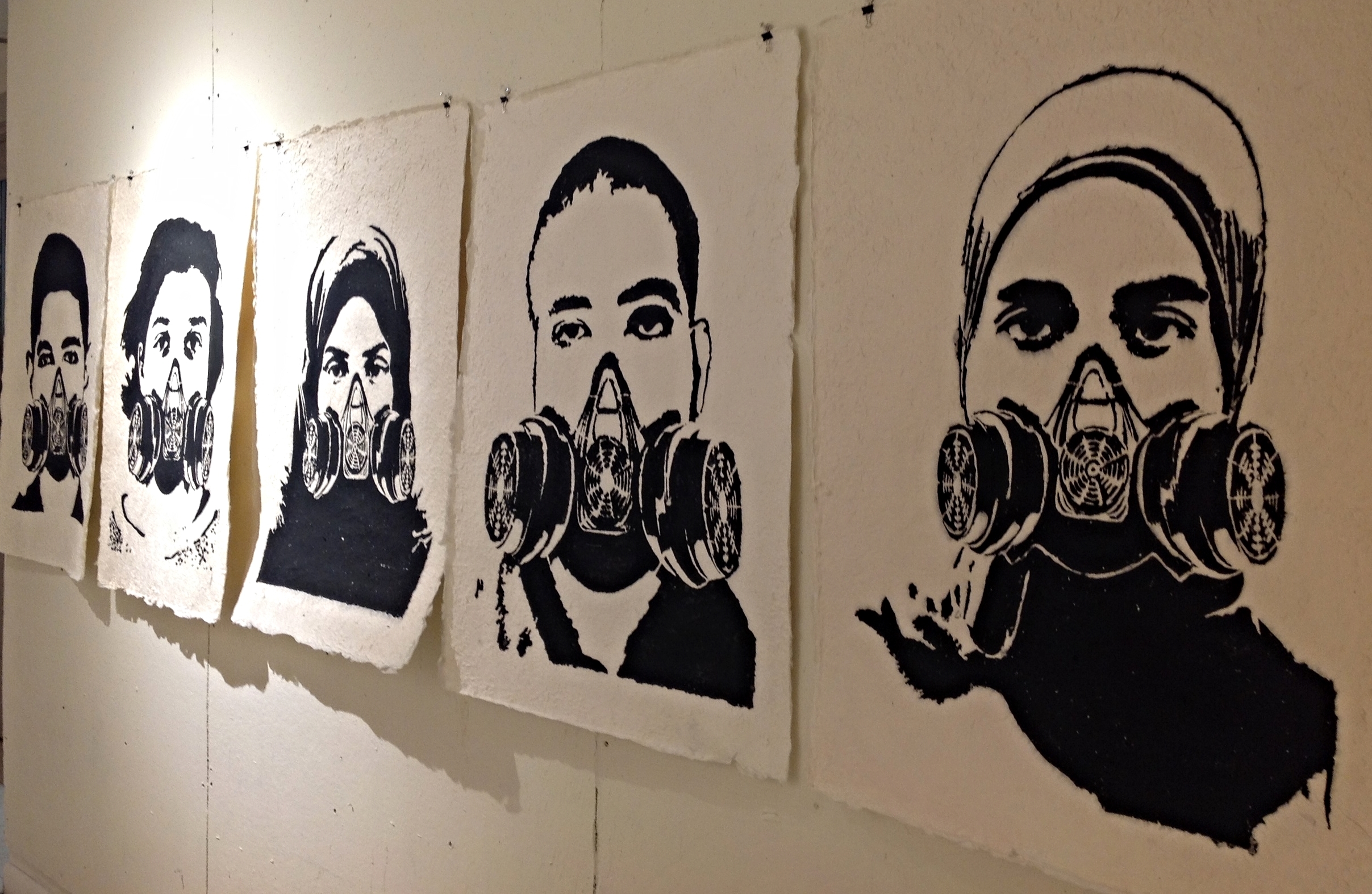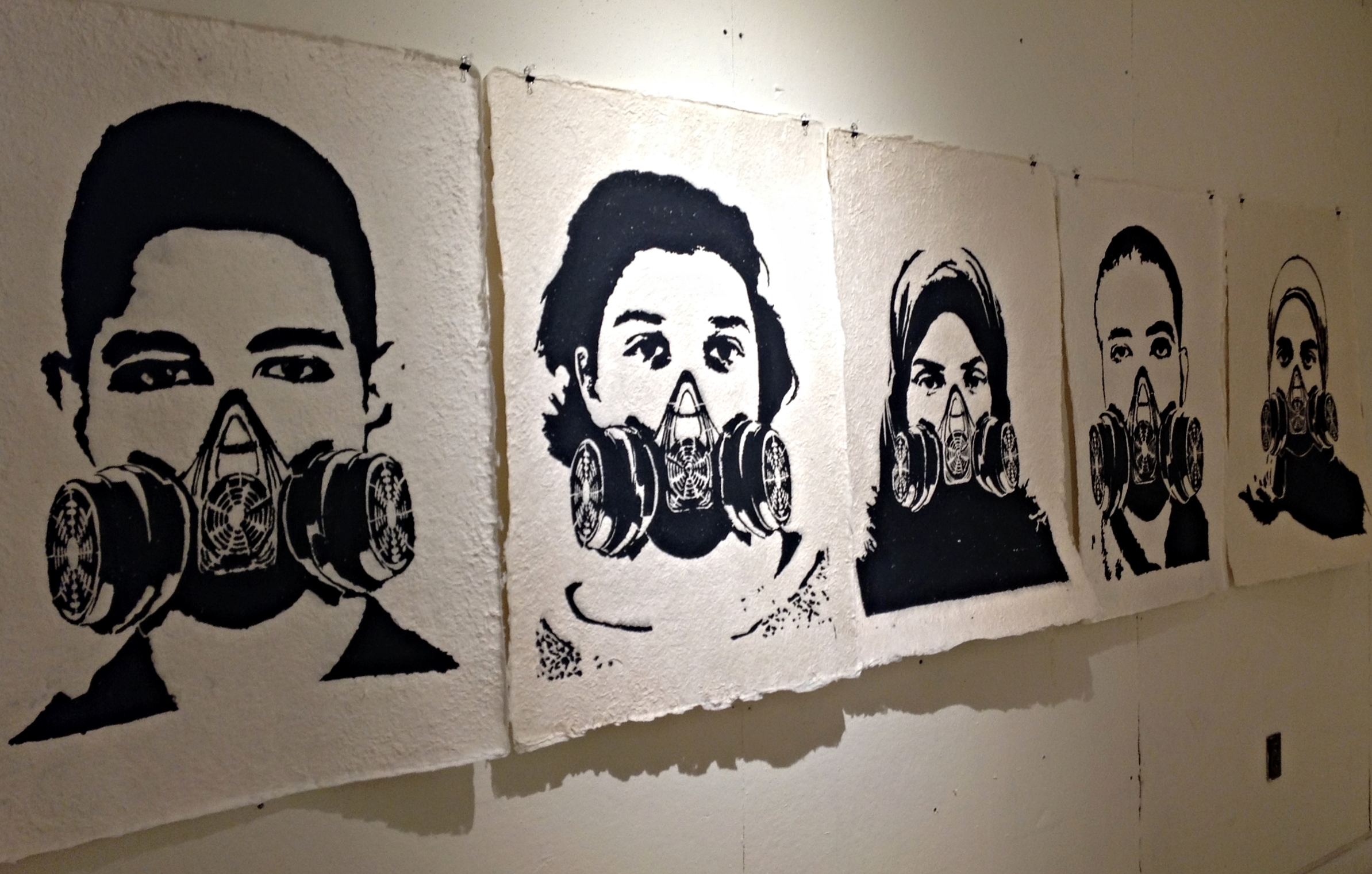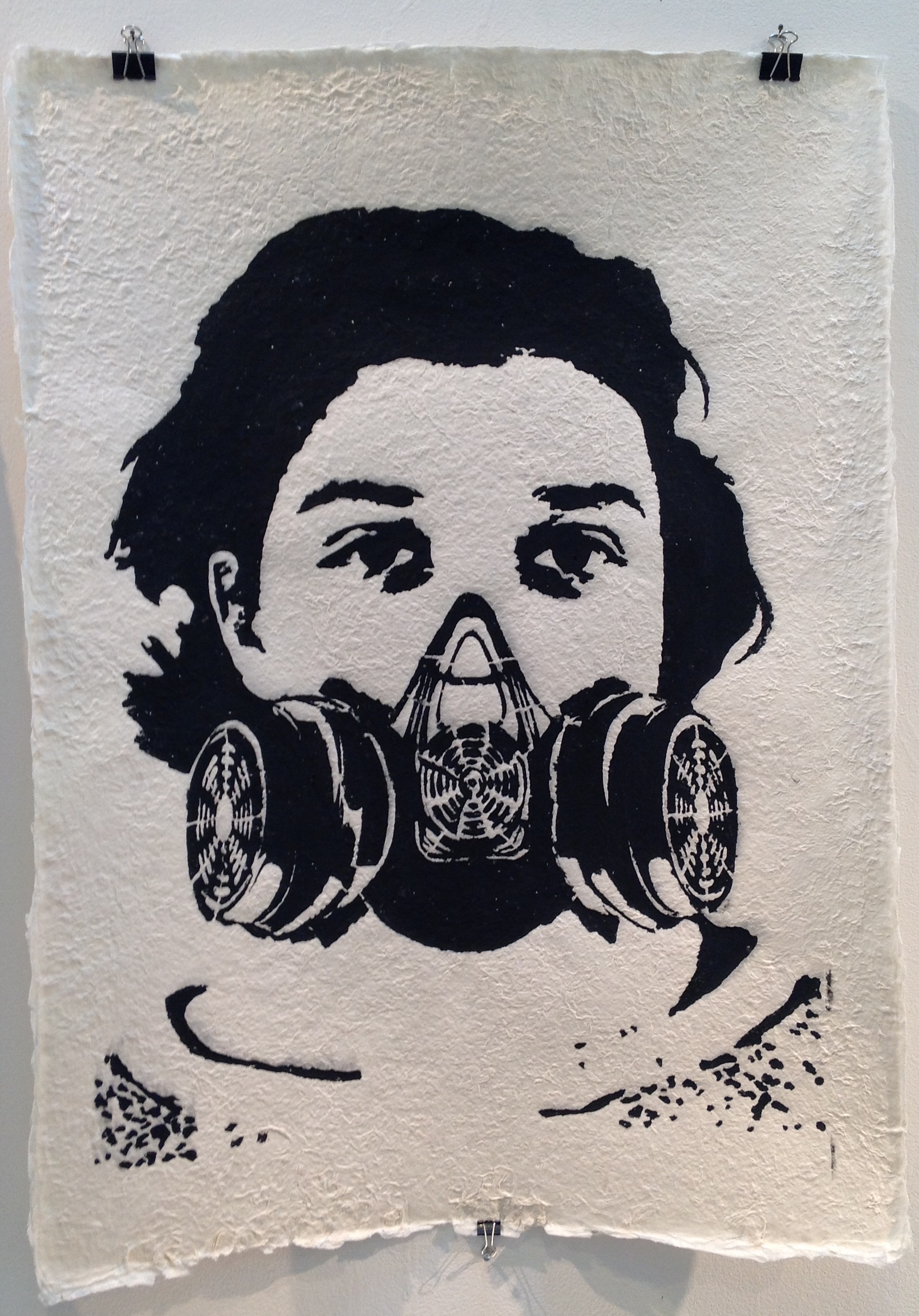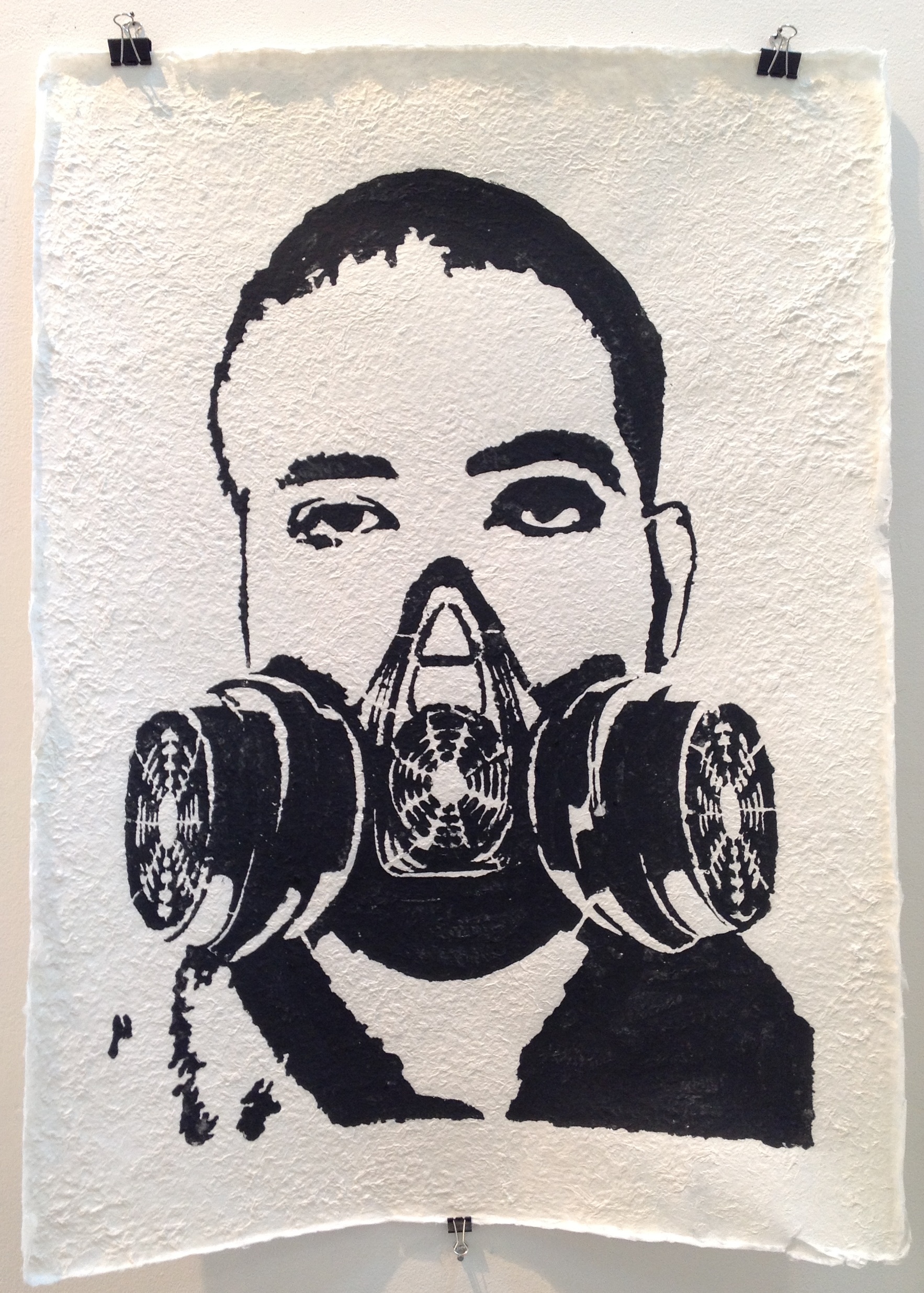







During the Egyptian revolution, graffiti played a seminal role in the depiction of public perceptions of events. The streets served as a live platform where people voiced their opinions on many political and social issues. The graffiti was born within the dust and dirt, the crowded bustle and messiness of the city of Cairo. During the revolution, graffiti mimicked the highly fluid, often volatile scenes of Egypt at the time. It was all about symbolism, using minimal text and image to send direct, easily understood and recalled messages. Painting on the walls, stenciling and other art forms were often far more powerful and challenging than mainstream media. My work is a response to the graffiti covering the walls on Mohamed Mahmoud Street, a street that witnessed many of the now historically documented massacres. Local people, artists and activists documented and recorded these massacres by painting the portraits of the people who died on that street, turning the site into a graveyard commemorating their loss. The walls became invisible behind the images, allowing artists and viewers to break through all physical boundaries, cross over fictive borders, the imaginary ‘lines in the sand’ separate truth from illusion. The graffiti reminded viewers that what was once ever-present had disappeared and gone. The handmade paper used in this exhibition brings to life those portraits while the gaze and stare of each face confronts the viewer, questioning reality. The series of portraits displayed here together in a row, simulates for the viewer the experience of that dramatic moment of history on Mohamed Mahmoud Street. Graffiti became a weapon and an echo of the past as it memorialized the people who died and the place of their sacrifice. This exhibition attempts to connect this historical moment to the present, as people continue to fight for their rights and for a genuine Egyptian democracy.
